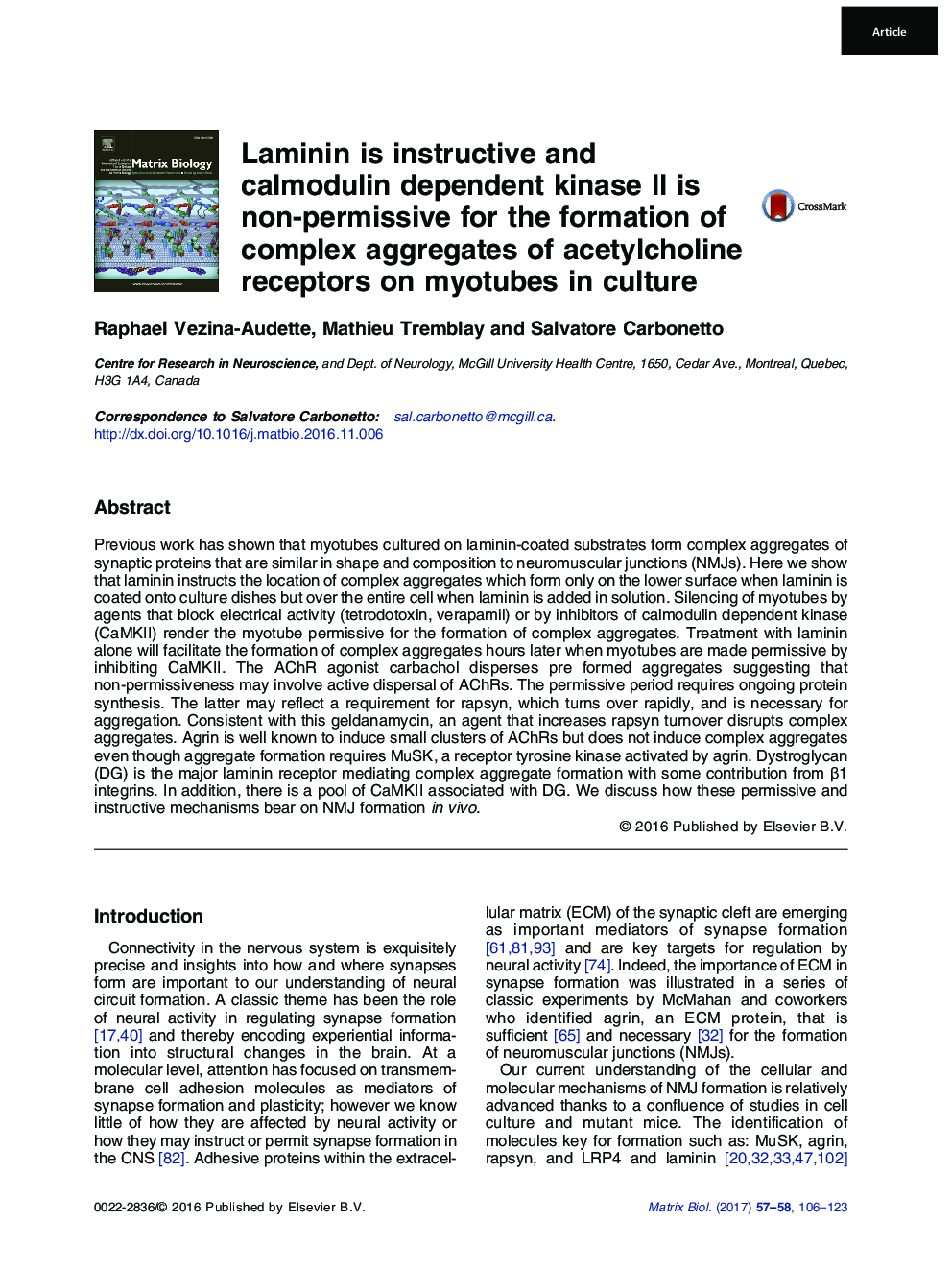| کد مقاله | کد نشریه | سال انتشار | مقاله انگلیسی | نسخه تمام متن |
|---|---|---|---|---|
| 5528523 | 1548003 | 2017 | 18 صفحه PDF | دانلود رایگان |

- Aggregates of synaptic proteins that look like postsynaptic specializations can be induced in cultures of muscle cells.
- The extracellular matrix protein laminin induces these aggregates and can instruct where they form on the cell.
- Inhibiting electrical activity or calmodulin dependent kinase II in muscle cells permits the formation of aggregates.
- The effects of laminin are mediated by dystroglycan and integrin laminin receptors.
- Our data suggest a novel route to activating MuSK and controlling neuromuscular -junction formation in vivo.
Previous work has shown that myotubes cultured on laminin-coated substrates form complex aggregates of synaptic proteins that are similar in shape and composition to neuromuscular junctions (NMJs). Here we show that laminin instructs the location of complex aggregates which form only on the lower surface when laminin is coated onto culture dishes but over the entire cell when laminin is added in solution. Silencing of myotubes by agents that block electrical activity (tetrodotoxin, verapamil) or by inhibitors of calmodulin dependent kinase (CaMKII) render the myotube permissive for the formation of complex aggregates. Treatment with laminin alone will facilitate the formation of complex aggregates hours later when myotubes are made permissive by inhibiting CaMKII. The AChR agonist carbachol disperses pre formed aggregates suggesting that non-permissiveness may involve active dispersal of AChRs. The permissive period requires ongoing protein synthesis. The latter may reflect a requirement for rapsyn, which turns over rapidly, and is necessary for aggregation. Consistent with this geldanamycin, an agent that increases rapsyn turnover disrupts complex aggregates. Agrin is well known to induce small clusters of AChRs but does not induce complex aggregates even though aggregate formation requires MuSK, a receptor tyrosine kinase activated by agrin. Dystroglycan (DG) is the major laminin receptor mediating complex aggregate formation with some contribution from β1 integrins. In addition, there is a pool of CaMKII associated with DG. We discuss how these permissive and instructive mechanisms bear on NMJ formation in vivo.
Journal: Matrix Biology - Volumes 57â58, January 2017, Pages 106-123